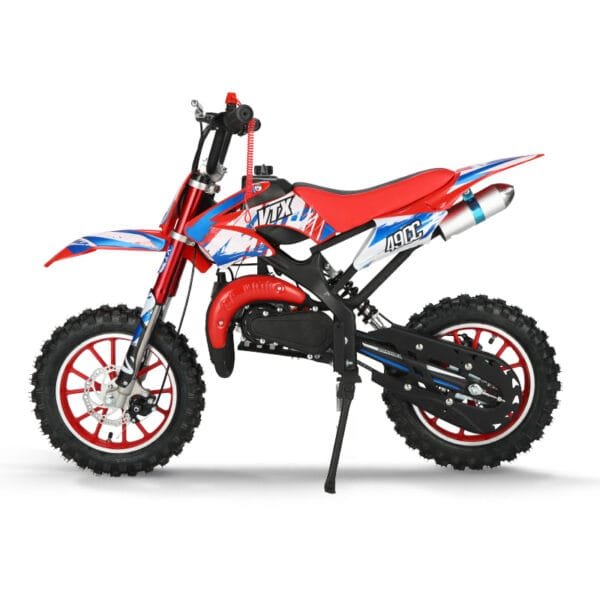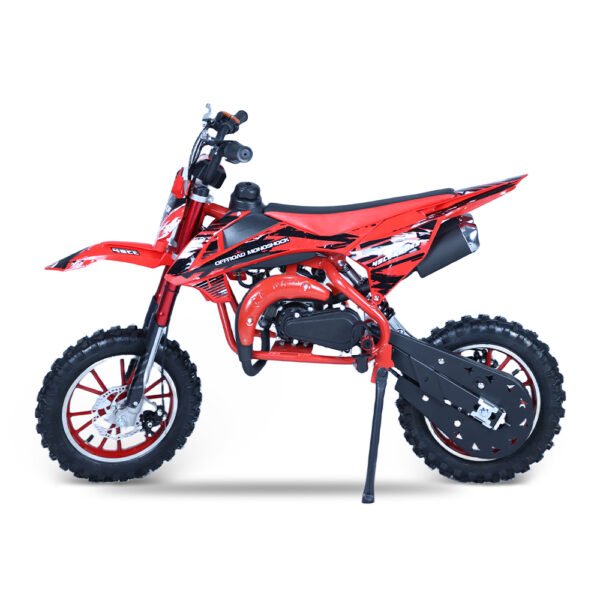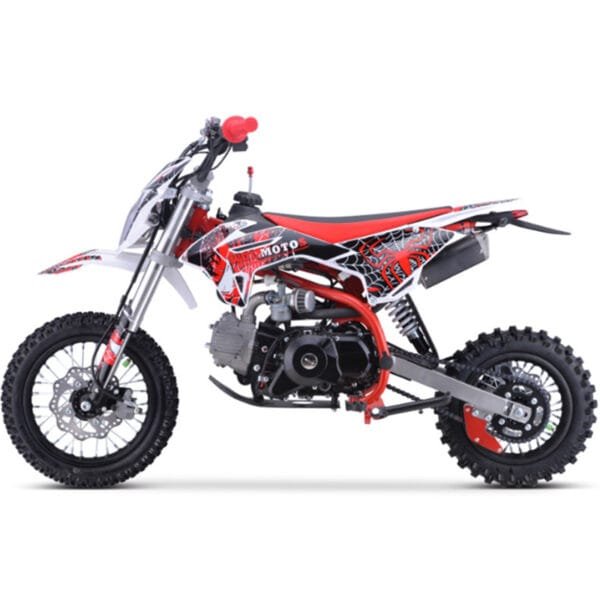
Air-cooled Dirt Bike VS. Water-cooled Dirt Bike
Air-cooled Dirt Bike VS. Water-cooled Dirt Bike: Which is Better for You?
Introduction
When it comes to dirt biking, choosing the right bike setup is essential, and one key decision is the type of cooling system your bike uses.
Dirt bikes usually feature either an air-cooled or a water-cooled engine, both designed to prevent overheating.
But how do you decide which is better for your riding style and maintenance preferences?
In this article, we’ll break down each system, compare their pros and cons, and guide you to make the right choice for your dirt biking needs.
Understanding Cooling Systems in Dirt Bikes
Every engine generates heat, and managing this heat is crucial for the engine’s health and performance.
Dirt bikes primarily use either air-cooled or water-cooled systems:
- Air-cooled systems rely on the natural flow of air over the engine to dissipate heat.
- Water-cooled systems use a liquid coolant, usually a mixture of water and antifreeze, circulated through a radiator.
How Air-Cooled Dirt Bikes Work
Air-cooled dirt bikes depend on airflow to keep the engine cool.
Fins surrounding the engine help draw away heat as air passes over them while riding.
This system is simple and effective at moderate speeds and in less demanding environments.
- Key Components: Air-cooled systems utilize heat fins and rely on the engine’s exposure to open air, making them efficient for cooling at steady speeds.
How Water-Cooled Dirt Bikes Work
Water-cooled bikes circulate coolant through a radiator system that absorbs engine heat and cools it before circulating it back to the engine.
The radiator is often positioned to catch airflow, maximizing cooling efficiency during intense rides.
- Key Components: Water-cooled engines use a radiator, coolant, hoses, and a pump to circulate the liquid.
Pros of Air-Cooled Dirt Bikes
- Simplicity: With fewer parts and no need for coolant, air-cooled bikes are mechanically simpler.
- Ease of Maintenance: There’s no radiator or coolant to check, which means less frequent maintenance.
- Cost-Effective: Typically, air-cooled bikes are less expensive than water-cooled ones.
- Lightweight: Without the added components, air-cooled engines are often lighter, which can improve handling.
Cons of Air-Cooled Dirt Bikes
- Lower Cooling Capacity: Air cooling is less effective at dissipating heat, especially at low speeds.
- Performance in High Temperatures: In very hot conditions, air-cooled engines are more likely to overheat.
- Not Ideal for Heavy Riding: Prolonged high-intensity riding may cause overheating and reduced performance.
Pros of Water-Cooled Dirt Bikes
- Superior Cooling: Water cooling is highly efficient, especially for prolonged rides or high speeds.
- Improved Engine Performance: Water-cooled engines run cooler and maintain performance consistency, even in intense conditions.
- Better for High-Performance Needs: For racing or aggressive riding, water cooling keeps engines from overheating and extends engine life.
Cons of Water-Cooled Dirt Bikes
- Complexity: Water-cooled systems have multiple parts, including the radiator, hoses, and coolant, which can be prone to failure.
- Higher Maintenance Needs: Water-cooled bikes require regular coolant checks and radiator maintenance.
- Potential for Leakage: Damaged hoses or radiators can lead to leaks, resulting in engine overheating if not addressed.
Air-Cooled Dirt Bikes: Best Scenarios
Air-cooled dirt bikes are great for recreational riders who:
- Enjoy riding at moderate speeds on less technical terrain.
- Prefer lower-maintenance bikes.
- Are on a budget and want to keep upfront and ongoing costs low.
Water-Cooled Dirt Bikes: Best Scenarios
Water-cooled dirt bikes are ideal for riders who:
- Plan to ride aggressively or in competitions.
- Frequently ride in hotter environments.
- Are comfortable with regular maintenance and check-ups to ensure peak performance.
Comparing Maintenance Needs
- Air-Cooled Maintenance: With fewer parts, maintenance is straightforward—just regular oil changes and routine inspections.
- Water-Cooled Maintenance: Requires checking coolant levels, maintaining hoses, and ensuring the radiator stays in optimal condition. It’s a bit more involved but essential for optimal performance.
Performance Comparison: Air-Cooled vs. Water-Cooled
Air-cooled engines tend to lose efficiency when temperatures soar, which can reduce overall horsepower and torque.
On the other hand, water-cooled engines maintain stable temperatures, keeping performance more consistent, especially in intense riding sessions or harsh climates.
Cost Analysis
- Air-Cooled Bikes: Usually, these are more affordable both at purchase and over the long term, thanks to simpler designs and fewer parts.
- Water-Cooled Bikes: Tend to be pricier upfront and require more costly maintenance, but they offer higher performance, particularly for competitive riders.
Environmental Impact
Air-cooled bikes can be more fuel-efficient due to their simpler designs, potentially reducing emissions slightly.
Water-cooled bikes, however, use coolants which can impact the environment if not disposed of correctly.
Which Cooling System is Right for You?
Choosing between air-cooled and water-cooled dirt bikes comes down to your riding style, budget, and willingness to perform maintenance.
For those who value simplicity and ease of use, air-cooled bikes are fantastic for casual riding.
If high performance and the ability to handle aggressive terrain are priorities, water-cooled dirt bikes are likely the better option.
Conclusion
The debate between air-cooled and water-cooled dirt bikes highlights important differences in performance, maintenance, and cost.
Knowing how you plan to use your dirt bike will guide you toward the system that fits your needs best.
Both types have their place on the trail, and choosing wisely can make a world of difference in your riding experience.
FAQs
1. Which cooling system is more durable?
Water-cooled engines may last longer under high-stress use, but air-cooled systems often have fewer parts, making them robust for lighter riding.
2. Do air-cooled dirt bikes overheat quickly?
Not necessarily; while air-cooled bikes can overheat in extreme conditions, they perform well for moderate and recreational riding.
3. How often should a water-cooled bike be serviced?
Checking coolant levels and inspecting hoses every few rides, with a full coolant replacement annually, helps keep water-cooled bikes in top shape.
4. Are water-cooled bikes better for racing?
Yes, water-cooled bikes maintain performance consistency under high stress, making them ideal for racing and competitive environments.
5. Can I convert an air-cooled dirt bike to water-cooled?
While theoretically possible, converting an air-cooled bike to water-cooled would be costly and complex, often requiring significant engine modifications.

















